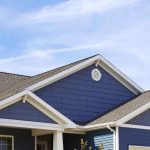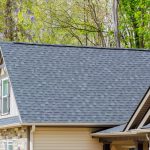Asphalt shingles are one of the most popular roofing materials used in Canada today. The quality of this type of material has evolved significantly over the past 10 years. New shingles will not only provide quality materials to protect your roof, but they now offer features that makes them a more environmentally-conscious choice than in the past.
Modern shingles offer improved energy performance and have solar-reflective properties that reduce the temperature of the roof in warmer months. They are also made with recycled materials.
Types of Asphalt Shingles
The two main types of asphalt shingles available on the market are organic and fibreglass.
Organic shingles are the older type of asphalt shingle available to consumers. The organic material used in this product is a cellular fibre substrate, which is often recycled paper which has been impregnated with asphalt and compressed under high pressure.
This variety is easier to install in cold weather than fibreglass shingles since they are more flexible. They also have the advantage of being more resistant to strong winds. Organic shingles are more durable when it comes to withstanding changes in temperature.
Fibreglass shingles are asphalt shingles that are manufactured with a mat composed completely of glass fibres. This fibreglass mat is covered with an asphalt coating, which is then followed by mineral granules. Architectural, or laminated, shingles are a bit thicker in appearance due to an extra layer of tabs.
Fibreglass shingles are also lighter than the organic ones, since they use less asphalt during the manufacturing process. This is also a more economical choice than organic shingles. Consumers will benefit from the fact that fibreglass shingles are more heat-resistant and the notched ends are less likely to lift during strong winds or periods of inclement weather.
Features of Asphalt Shingles
Solar Reflectance Index (SRI) is a way to measure a roof’s ability to reject solar heat. Modern granule technologies have been developed to make shingles more solar-reflective, which ensures that the roof and attic of a home will stay cooler during the summer. The granular layer on the shingle reflects the sun’s rays without affecting the colour of the roof.
Adhesives and nails work together to provide shingles with wind resistance. Most of them can resist winds traveling at speeds of more than 100 km/h. High-performance shingles provide protection and resistance to winds moving at up to 220 km/h.





